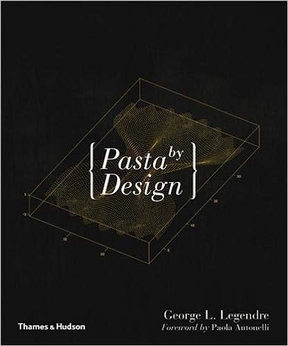Pasta by Design
Pasta by Design is a unique concept that merges the culinary arts with design and technology, offering a fresh perspective on one of the world's most beloved foods, pasta. This concept explores the myriad shapes and forms that pasta can take, each with its own history, design principles, and culinary applications. Pasta by Design not only celebrates the diversity of pasta shapes but also delves into the science and mathematics behind their creation, making it a fascinating subject for chefs, designers, and food enthusiasts alike.
History of Pasta Shapes[edit | edit source]
The history of pasta is deeply intertwined with the history of human civilization itself. From the simple sheets and strands of the earliest pastas to the complex and intricate shapes found today, pasta has evolved significantly over the centuries. The design of pasta shapes has been influenced by various factors, including regional culinary traditions, the functionality of the shapes in holding sauces, and the creativity of pasta makers.
Design and Technology in Pasta[edit | edit source]
In recent years, the field of pasta design has been revolutionized by advancements in technology. Designers and chefs have begun to use software and 3D printing technology to create new pasta shapes that were previously impossible to produce. This intersection of technology and culinary art has opened up new possibilities for pasta design, allowing for the creation of shapes that maximize sauce retention, enhance texture, and improve cooking efficiency.
Mathematics of Pasta Shapes[edit | edit source]
The design of pasta is not only an art but also a science. The mathematics of pasta shapes involves understanding the geometry and physics that dictate how a pasta shape is formed and how it behaves when cooked. For example, the surface area to volume ratio of a pasta shape can affect how much sauce it can hold, while the thickness and curvature of the pasta can influence its cooking time and texture. By applying mathematical principles, designers can create pasta shapes that are not only visually appealing but also optimized for culinary performance.
Culinary Applications[edit | edit source]
Each pasta shape is designed with specific culinary applications in mind. Shapes such as spaghetti and linguine are ideal for light, oil-based sauces, while shapes with nooks and crannies like fusilli and rotini are perfect for holding onto thicker sauces. The design of pasta shapes also considers factors such as how the pasta will be served, whether it is intended to be eaten with a fork or spoon, and how it interacts with other ingredients in a dish.
Future of Pasta Design[edit | edit source]
The future of pasta design is likely to see even greater collaboration between chefs, designers, and technologists. As our understanding of food science and technology advances, so too will our ability to create innovative pasta shapes that delight the senses and enhance the culinary experience. The exploration of sustainable materials and production methods is also an important area of focus, as the food industry seeks to reduce its environmental impact.
Navigation: Wellness - Encyclopedia - Health topics - Disease Index - Drugs - World Directory - Gray's Anatomy - Keto diet - Recipes
Search WikiMD
Ad.Tired of being Overweight? Try W8MD's physician weight loss program.
Semaglutide (Ozempic / Wegovy and Tirzepatide (Mounjaro / Zepbound) available.
Advertise on WikiMD
WikiMD is not a substitute for professional medical advice. See full disclaimer.
Credits:Most images are courtesy of Wikimedia commons, and templates Wikipedia, licensed under CC BY SA or similar.Contributors: Prab R. Tumpati, MD

